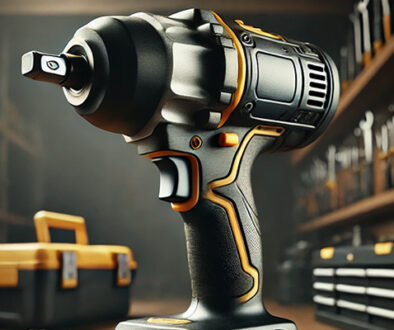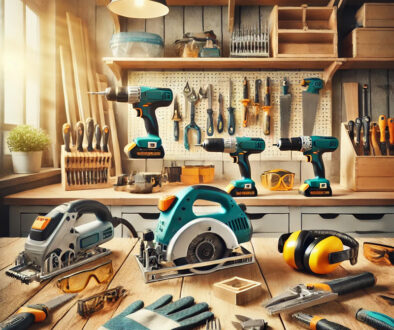Nail Gun
A nail gun, or nailer, is a powerful tool used to drive nails into wood or other materials quickly and efficiently. It is a staple in construction, woodworking, and home improvement projects, significantly increasing productivity compared to manual hammering.
Types of Nail Guns
-
Pneumatic Nail Guns: Powered by compressed air, these are the most common type, known for their power and reliability.
-
Electric Nail Guns: Available in corded and cordless versions, they offer convenience and mobility, especially in areas without access to air compressors.
-
Gas-Powered Nail Guns: Use a fuel cell to generate the force needed to drive nails. They are portable but require regular refueling.
-
Powder-Actuated Nail Guns: Use explosive charges to drive nails into hard materials like concrete and steel, often used in heavy-duty construction.
Key Features
- Magazine: Holds nails in a strip or coil for rapid firing.
- Trigger Mechanism: Controls nail firing, with options for sequential or bump firing modes.
- Depth Adjustment: Allows users to control how far the nail is driven into the material.
- Safety Features: Include nose guards and contact tips to prevent accidental firing.
Applications
- Framing: Essential for constructing walls, roofs, and floors.
- Roofing: Specialized nail guns quickly fasten shingles and other roofing materials.
- Finish Carpentry: Finish nailers are used for trim, molding, and other detailed work.
- Flooring: Nail guns streamline the installation of hardwood and other flooring materials.
Advantages
- Speed and Efficiency: Nail guns can drive dozens of nails per minute, greatly speeding up projects.
- Consistency: Nails are driven with uniform force, ensuring consistent results.
- Reduced Fatigue: Less physical effort is required compared to manual hammering.
Safety Considerations
- Protective Gear: Always wear safety goggles to shield eyes from debris.
- Proper Handling: Keep fingers clear of the nail path and use the tool only as directed.
- Secure Work Area: Ensure materials are properly clamped to prevent movement during nailing.
Limitations
- Cost: Initial investment can be higher than manual tools, especially for high-end models.
- Maintenance: Regular cleaning and maintenance are needed to ensure optimal performance.
- Power Source: Pneumatic and gas models require external power sources or fuel, which can limit portability.
Choosing the Right Nail Gun
- Project Needs: Consider the specific tasks and materials involved. For heavy framing, a pneumatic framing nailer is ideal, while a finish nailer suits detailed trim work.
- Power Source: Evaluate the availability of power sources and choose between pneumatic, electric, or gas models based on convenience and project scale.
- Nail Size: Ensure the nail gun can handle the appropriate nail size and type for your project.
Conclusion
Nail guns are invaluable tools in construction and carpentry, offering speed, efficiency, and precision. By understanding the different types and their applications, users can select the right nail gun to enhance their productivity and achieve professional results. Whether for large construction projects or detailed finish work, nail guns provide the power and consistency needed to complete tasks quickly and effectively.




